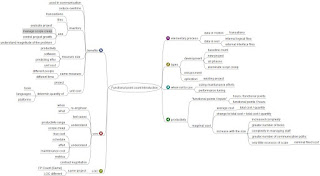Try it out, you will not loose your money.
Product Description
Apply the principles of Scrum, one of the most popular agile programming methods, to software project management—and focus your team on delivering real business value. Author Ken Schwaber, a leader in the agile process movement and a co-creator of Scrum, brings his vast expertise to helping you guide the product and software development process more effectively and efficiently. Help eliminate the ambiguity into which so many software projects are borne, where vision and planning documents are essentially thrown over the wall to developers. This high-level reference describes how to use Scrum to manage complex technology projects in detail, combining expert insights with examples and case studies based on Scrum. Emphasizing practice over theory, this book explores every aspect of using Scrum, focusing on driving projects for maximum return on investment.
About the Author
Ken Schwaber is the co-creator of Scrum. He is one of the leaders of the agile process revolution, as a signatory of the Agile Manifesto and founder and director of the Agile Alliance. He has been in the software development industry for more than 30 years and teaches and speaks at many conferences, including OOPSLA & Software Development.Read More details from amazon.










